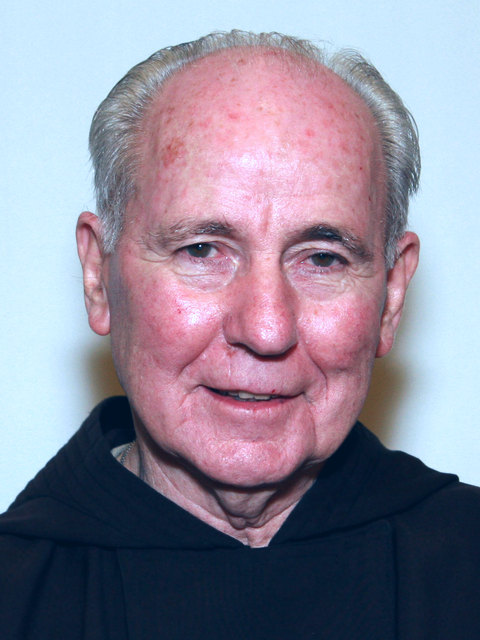 Our brother Gary Stakem, OFM Cap., died peacefully in his bed at St. Augustine Friary, Pittsburgh, at 5:30 A.M. on Tuesday, October 5th, 2022. He was in residence at our Motherhouse Care community since January 2020. At 96, he was the oldest living member of our Province at the time of his passing, a Capuchin friar for 76 years and a priest for 71 years. Although for most of his two years as a resident of St. Augustine Friary Gary’s body weakened, and signs of an increasing dementia would plague him, our confrere’s smile and flashes of memories (always his strong point!) would continue to reveal his kind, gentle and indomitable spirit that never weakened.
Our brother Gary Stakem, OFM Cap., died peacefully in his bed at St. Augustine Friary, Pittsburgh, at 5:30 A.M. on Tuesday, October 5th, 2022. He was in residence at our Motherhouse Care community since January 2020. At 96, he was the oldest living member of our Province at the time of his passing, a Capuchin friar for 76 years and a priest for 71 years. Although for most of his two years as a resident of St. Augustine Friary Gary’s body weakened, and signs of an increasing dementia would plague him, our confrere’s smile and flashes of memories (always his strong point!) would continue to reveal his kind, gentle and indomitable spirit that never weakened.
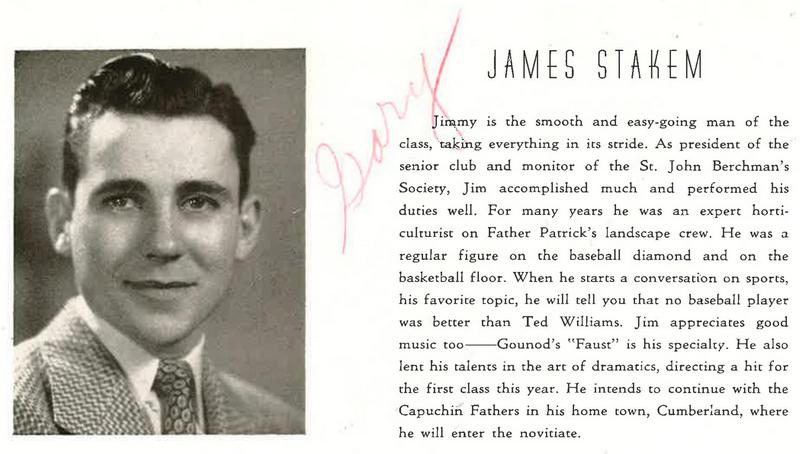 James Edward Stakem was born on March 31, 1926, to parents Richard and Mary Angela (Cosgrove) Stakem. The fourth of seven children, James attended St. Joseph Elementary School in Midland, PA, before entering St. Fidelis High School and College Seminary for his secondary and collegiate education. He had known the Capuchins from his youth; our presence in nearby Cumberland, MD, allowed for many a friar to minister to the men and women of the Allegany Valley, and Gary’s family knew the brothers of the ‘monastery’ well from their service among them. At his completion of the traditional six-years of study (high school and junior college), his classmates described him as “the smooth and easy-going man of the class (Skullcap 1945).” Some things never change.
James Edward Stakem was born on March 31, 1926, to parents Richard and Mary Angela (Cosgrove) Stakem. The fourth of seven children, James attended St. Joseph Elementary School in Midland, PA, before entering St. Fidelis High School and College Seminary for his secondary and collegiate education. He had known the Capuchins from his youth; our presence in nearby Cumberland, MD, allowed for many a friar to minister to the men and women of the Allegany Valley, and Gary’s family knew the brothers of the ‘monastery’ well from their service among them. At his completion of the traditional six-years of study (high school and junior college), his classmates described him as “the smooth and easy-going man of the class (Skullcap 1945).” Some things never change.
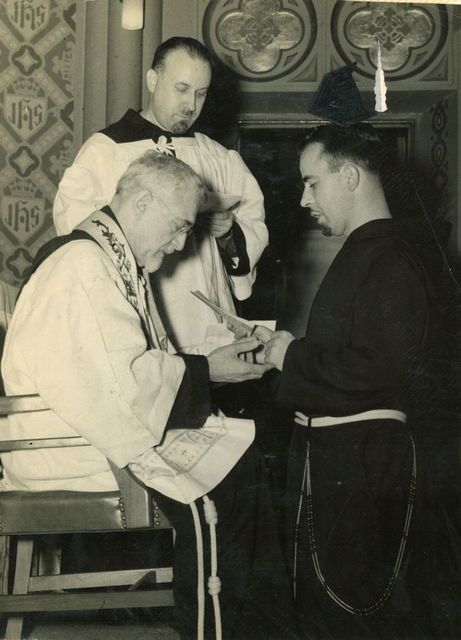 In July 1945, as World War II was coming to its close, James received his religious name, Gary, when he donned the Capuchin habit as his novitiate year began in Cumberland, MD. After professing vows in 1946, he did his philosophy studies at St. Fidelis Monastery in Victoria, KS, before moving on to studies in theology in Washington, DC’s Capuchin College with his classmates who included Ronald Lawler (+2003), Pascal Schaller (+2005) and Joel Ostrowski (+2003). He was ordained a priest friar on August 28, 1951.
In July 1945, as World War II was coming to its close, James received his religious name, Gary, when he donned the Capuchin habit as his novitiate year began in Cumberland, MD. After professing vows in 1946, he did his philosophy studies at St. Fidelis Monastery in Victoria, KS, before moving on to studies in theology in Washington, DC’s Capuchin College with his classmates who included Ronald Lawler (+2003), Pascal Schaller (+2005) and Joel Ostrowski (+2003). He was ordained a priest friar on August 28, 1951.
Our brother Gary ministered in Herman, PA, Pittsburgh, PA, Annapolis, MD, and Washington, DC, before beginning his journey of eighteen years in the Province’s mission to the Southern Highlands of Papua New Guinea in 1956. He spent ten years in bush ministry among the people, and it was not too much of a surprise to him when he was elected to serve the mission as its Superior Regular for five years before serving three years as Administrator of the Cathedral of the Diocese of Mendi.
I was Superior regular of the mission from March 1966 to December 1971 . . . It was felt it was time for a change. I knew I was in the running since I was first counselor. Also I was one of those candidates for Bishop (Top secret: This I knew would not happen since Monsignor 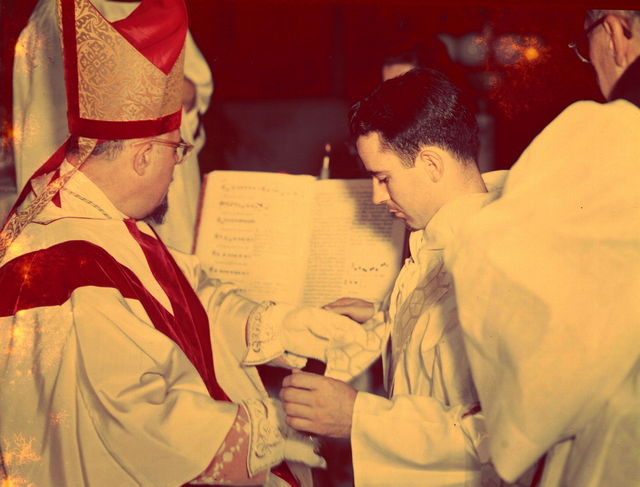 Firmin [Schmidt] was, more or less, in possession). In no way did I feel that I was ‘the choice’ for Superior Regular, still it did not come as a complete surprise. One of my first thoughts after election was “now the fellows will see my feet of clay.” Never at any time did I feel ‘different’ about or because of my election. I always felt that I was just one of the friars. And I think it came across that way to others. Thus, when I left office in 1971, I didn't feel any different than before. I didn't feel that I had lost any power. If in regard to this aspect there was any fault, it was that I didn't assert myself enough. But here, too, no regrets.
Firmin [Schmidt] was, more or less, in possession). In no way did I feel that I was ‘the choice’ for Superior Regular, still it did not come as a complete surprise. One of my first thoughts after election was “now the fellows will see my feet of clay.” Never at any time did I feel ‘different’ about or because of my election. I always felt that I was just one of the friars. And I think it came across that way to others. Thus, when I left office in 1971, I didn't feel any different than before. I didn't feel that I had lost any power. If in regard to this aspect there was any fault, it was that I didn't assert myself enough. But here, too, no regrets.
. . . Gradually we began to adapt the liturgy to the customs of the people. We found, though, that even the old ways were not unacceptable to the natives. I believe that it shows that these eternal truths come through in spite of the difference of culture. But I made moves to adapt the liturgy to the culture of the people; this is not easy. I was never one with insights into these matters, but I was quick to take on the ideas that men like Dunstan, Senan, Gabe and others came up with. As the country becomes more ‘civilized,’ I think it is more important to have the liturgy in touch with the reality of the people. -- From undated recollections
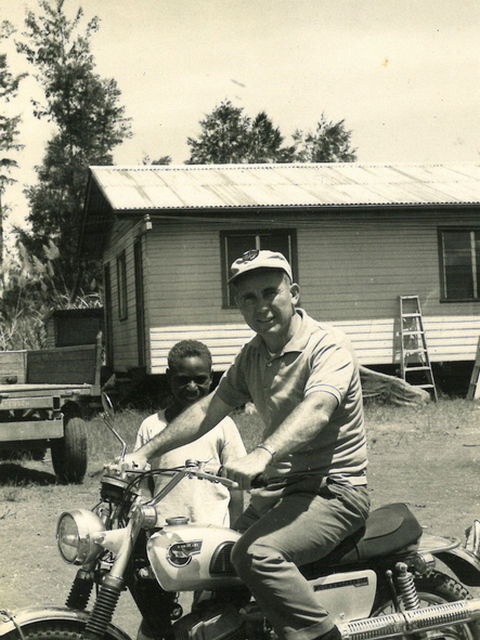 Gary returned to the U.S. for the Provincial Chapter meeting in 1974 as the elected delegate from the mission, but, to his surprise (and probably his alone), he was elected to the Province Council as the mission friars sought representation in leadership. He would not return to Papua New Guinea to say “farewell” until 1991.
Gary returned to the U.S. for the Provincial Chapter meeting in 1974 as the elected delegate from the mission, but, to his surprise (and probably his alone), he was elected to the Province Council as the mission friars sought representation in leadership. He would not return to Papua New Guinea to say “farewell” until 1991.
The new Councilor was assigned as guardian to the friars of the theology house at Capuchin College in DC. Even he looked back at the assignment as one that was less than ideal. He had been removed from changes that took place during the Council and the adaptations and developments spurred on by the 1968 Constitutions after the Council of Vatican II. His own culture shock was managed along side the growing desire among the young friars for more adult conversations about decisions to be made. He was not unhappy about moving to a more tranquil assignment outside of Formation work after the subsequent Chapter of 1977.
The fact that Gary was elected to two additional terms on the Council is a mark of the respect his confreres held for his patience, equanimity and wisdom. All of those qualities were anchored in his deep desire for faithfulness to his Capuchin vocation. He was instrumental in the sale of the St. Fidelis property in Herman, PA, the improvement of the friars’ plot at St. Mary Cemetery and the development of a new friars’ plot there. He had an abiding interest and involvement in the varied discussions regarding the location and lifestyle of the Province’s hermitage, and served numerous Secular Franciscan communities in Ohio, Pennsylvania and Maryland.
 Gary himself was not a man of surprises: he was known to be unfailingly calm, respectful and approachable – in the words of one Provincial Minister “as gracious and gentlemanly a friar as ever there was.” Over his 76 years as a Capuchin and 71 years as a priest friar, Gary had more than 30 different assignments at home in the USA and overseas in Papua New Guinea, with 22 changes of address! He once wrote that “most of my assignments came as complete surprises.”
Gary himself was not a man of surprises: he was known to be unfailingly calm, respectful and approachable – in the words of one Provincial Minister “as gracious and gentlemanly a friar as ever there was.” Over his 76 years as a Capuchin and 71 years as a priest friar, Gary had more than 30 different assignments at home in the USA and overseas in Papua New Guinea, with 22 changes of address! He once wrote that “most of my assignments came as complete surprises.”
He was much respected as a caretaker of the Province’s corporate memory and took great pleasure in spending a week each year educating new classes of Postulants about its history. He was a part of the Provincial History Committee in preparation for the 125th Jubilee of the province in 1998, and subsequently authored “Reaching New Horizons,” the opening chapter of the Province’s memoir Change and Become: Capuchin Friars: The Province of St. Augustine 1948-1998. Gary was writing about his own generation’s experience as he voices the challenges and excitement he experienced as a young man 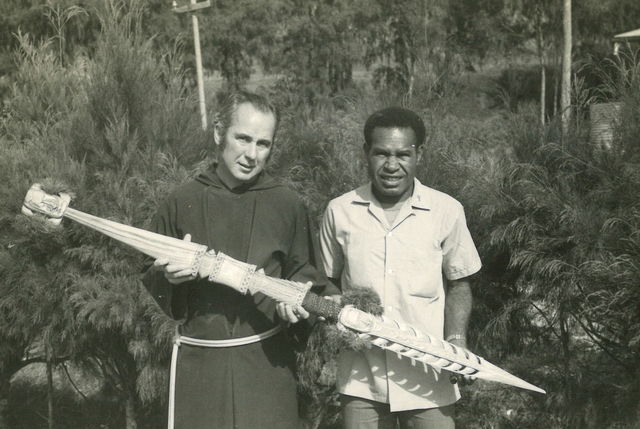 and his appreciation of the Provincial leaders he admired:
and his appreciation of the Provincial leaders he admired:
The summer of 1948 began a time of old doors closing and new ones opening. The basis of much of the change had come in the 1930s and early 1940s, as America experienced the Great Depression and World War II. American society was changing. A popular song during the war asked: “How ya’ gonna keep ‘em down on the farm, after they've seen Paree?” A religious community is not unaffected by the changes in society. The monastery wall doesn't mean isolation from the surrounding world.
But it wasn't just the changes in society that brought on significant shifts within the Province. The wisdom, foresight, and vision of many friars were the key to these changes. Outstanding among these men were three Ministers Provincial: Fr. Claude Vogel, from 1941 to 1950 and 1956 to 1959; Fr. Victor Green, from 1950 to 1956; and Fr. Giles Staab, from 1959 to 1964.
During this period houses of formation were shifted, new houses established, some small friaries were closed, others were consolidated, ministries were expanded, the mission to Puerto Rico was strengthened and the Province courageously accepted a new mission in Papua New Guinea. These were times of challenge, growth and excitement. The Capuchins of the Pennsylvania Province had truly entered a new era.
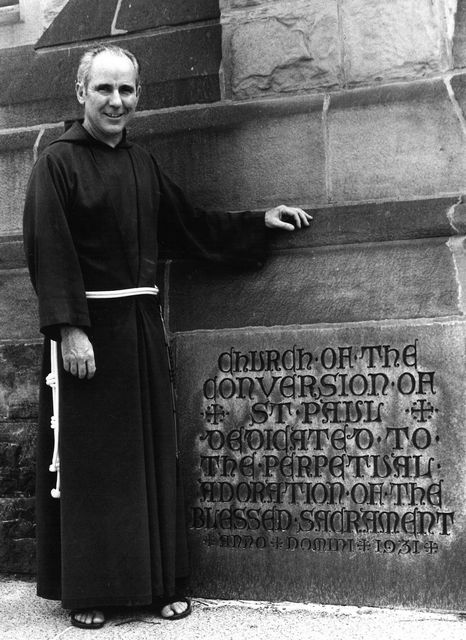 Gary was an important part of the changes that would take place in his own ministerial adventure. In 1978, Gary was appointed Guardian to a new house that was established in Cleveland, OH, as the Province expanded westward. The Conversion of St. Paul Church, which housed the Poor Clares of Perpetual Adoration, became home to St. Paul Friary, with friars who ministered to the Sisters and to the urban population which sought solace and comfort from our brothers’ work among them.
Gary was an important part of the changes that would take place in his own ministerial adventure. In 1978, Gary was appointed Guardian to a new house that was established in Cleveland, OH, as the Province expanded westward. The Conversion of St. Paul Church, which housed the Poor Clares of Perpetual Adoration, became home to St. Paul Friary, with friars who ministered to the Sisters and to the urban population which sought solace and comfort from our brothers’ work among them.
It was at the turn of the Millennium that our confrere realized his energies were starting to fade and his capacity for full-time ministry was becoming limited. Writing to Provincial Minister Paul Kuppe, he remarked, “I’ve become more Laissez-faire now; my get-up-and-go got up and went.” What did not fade was his generous spirit and obedient attitude toward any duty requested of him. He took on the role of Coordinator of Replacement Ministry from 2000-2006 with a brief stint as Administrator pro-tem of St. Clare parish in Clairton, PA, his final parochial assignment. He spent most of his last years in his beloved  Herman, PA, assisting with local friary administration and ministry to Secular Franciscan communities before accepting his final assignment to the newly rebuilt St. Augustine Friary in 2020 so that he could receive the medical attention necessary to maintain his surprisingly good health and support his limited mobility.
Herman, PA, assisting with local friary administration and ministry to Secular Franciscan communities before accepting his final assignment to the newly rebuilt St. Augustine Friary in 2020 so that he could receive the medical attention necessary to maintain his surprisingly good health and support his limited mobility.
A dedicated Capuchin to the end, he would be found in private prayer in the chapel at all hours of the day and night, and celebrated the entire Divine Office and Mass. Looking back at his Jubilees of 75 years of Profession and 70 years of Ordination in 2021, Gary simply remarked, “It has been a great life.”
It is a virtual certainty that no one who knew him would ever disagree with that! Besides his parents, Father Gary was preceded in death by each of his siblings: brothers Richard, Jr., William, Joseph, and Leo, and by sisters Mary Elizabeth (Betty) Minke and Rose Mary Webster. He is survived by his nephew, Father Ward Stakem, OFM Cap. and many other nieces and nephews.
________________________________________________
Funeral Celebrations
Tuesday, October 11, 2022
Viewing and Visitation
Pittsburgh, PA
St. Augustine Friary
221 36th Street
Reception of the body
4:00 p.m.
(friars only)
Public Viewing
7:00pm – 8:00pm
Prayer Vigil & Remembrances
8:00pm
________________________________________________
Wednesday, October 12, 2022
Transfer of Body to Herman, PA
Viewing & Visitation
Butler, PA
St. Mary of the Assumption Church
821 Herman Road
10:00am – 11:00am
Funeral Mass of Resurrection
11:00 a.m.
Burial will follow the Mass in
the friars’ plot at St. Mary Cemetery.
_________________________________
Memorial donations to honor
the life of our brother Gary
may be made online
to the Capuchin Franciscan Friars
or to the address in the footer below.
